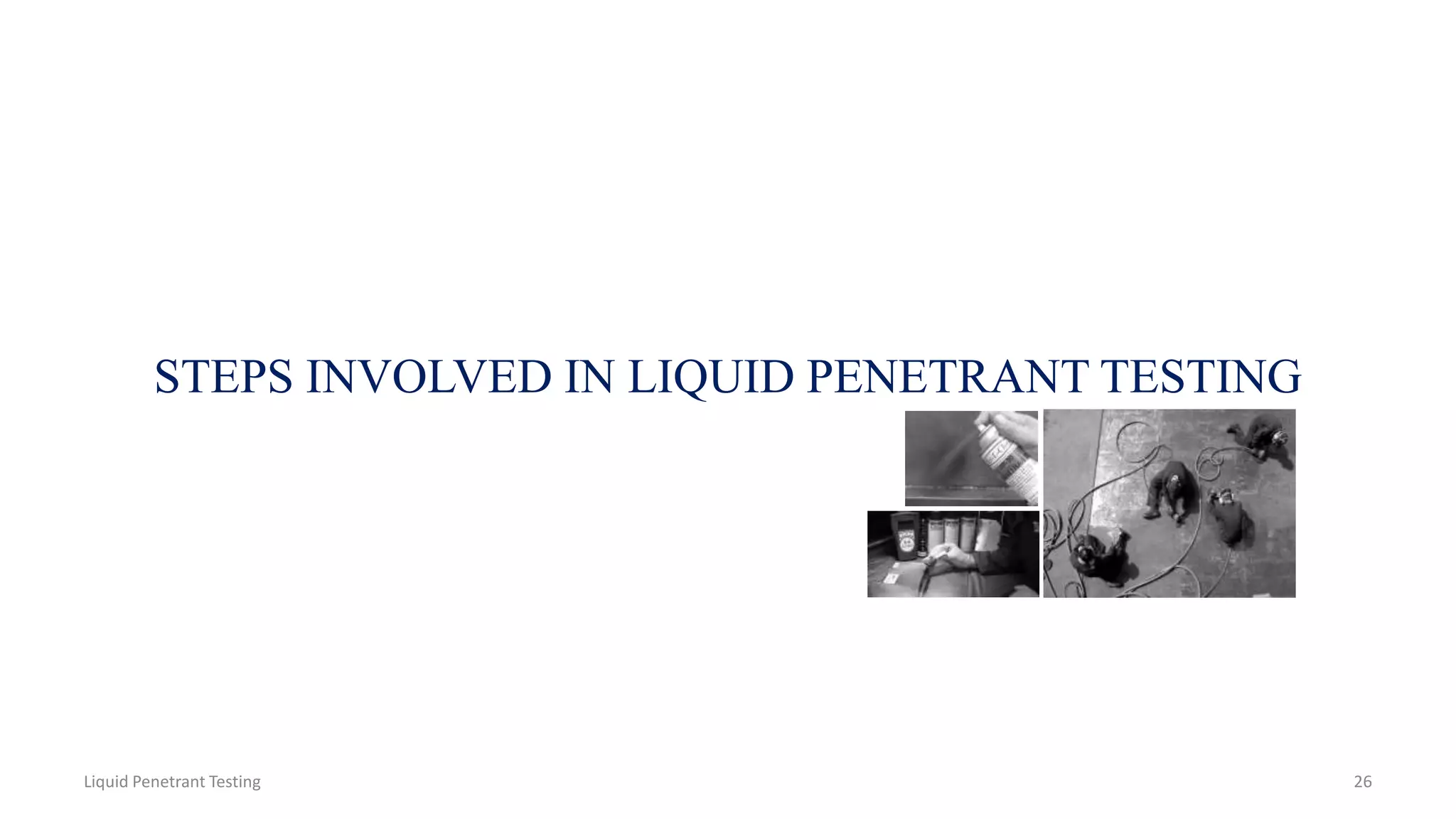Liquid penetrant testing (LPT) is a widely used nondestructive testing method to reveal surface-breaking flaws. It works by drawing a penetrant liquid into flaws via capillary action, then removing excess penetrant and applying a developer which extracts the penetrant from flaws and makes indications visible. The process involves surface preparation, penetrant application and dwell, excess penetrant removal, developer application, inspection, and cleaning. LPT can detect small flaws but only on accessible surfaces and requires multiple controlled processing steps.












































